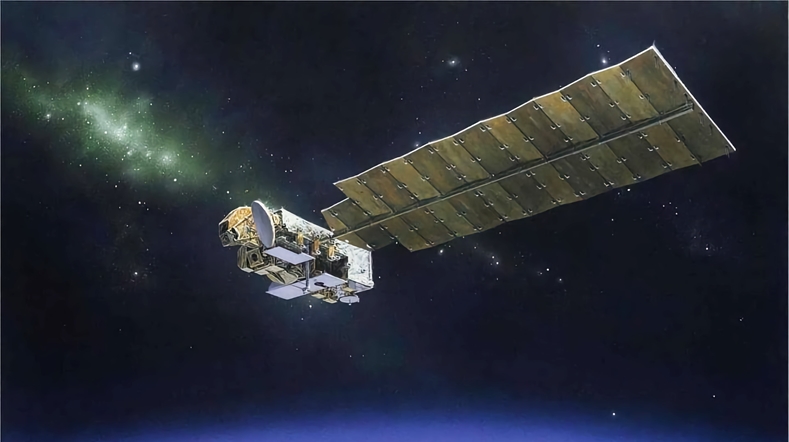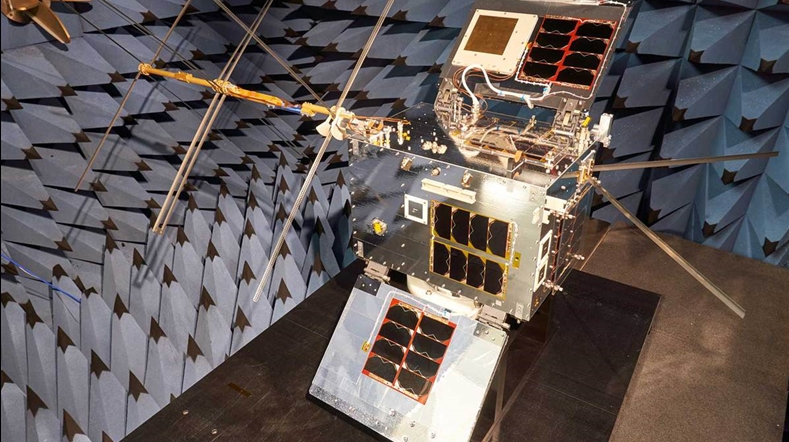
TANGO satellite: monitoring greenhouse gas emissions
Status project
Ongoing
In cooperation with
ISISpace, SRON and KNMI
The newly proposed TANGO satellite mission can contribute by offering global, independent monitoring of major sources of anthropogenic (man-made) greenhouse gas emissions.
Realising the Paris Agreement requires us to hold organisations responsible for greenhouse gas emissions. But at the moment, that is difficult to do so, since emissions are mostly estimated and not measured. The sooner we can collect consistent, accurate emissions data, the sooner we can work to reverse climate change.
TANGO satellite takes a closer look
TANGO stands for Twin Anthropogenic Greenhouse gas Observers. Working with ISISpace, SRON and KNMI, TNO has played an essential role in designing a twin satellite system that can measure emissions at individual industrial facilities at a spatial resolution of around 300 m x 300 m.
The agile TANGO satellites will be the only ones of their kind in Europe. Every three to four days, they can aim directly at known sources of greenhouse gas emissions, and accurately measure them. This allows the determination of publicly available emissions data and trends, their geographical distribution, their variations throughout the year, and the impact of reduction measures.
The TANGO mission is one of four winning proposals from a call from the European Space Agency (ESA), asking for innovative small satellite science missions. The four winning teams have been asked to do a design study of their proposed mission concept. Later in 2020, ESA will consider funding full mission realisation for at least one team.
The TANGO mission will use two Spectrolite instruments
TNO’s major contribution came from making things smaller. Our Spectrolite family of small instruments has sufficient high spatial resolution to measure emissions, and yet still can be mounted on a standardised nano satellite platform of less than 20 kg. This is significantly more compact than traditional satellite systems that weigh hundreds of kilograms. This approach also saves the time and cost of building a bespoke satellite platform, as is necessary for traditional missions, making Spectrolite ideally suited for the TANGO mission.
The TANGO mission will use two Spectrolite instruments to measure:
- Carbon dioxide (CO2) emissions with a threshold of ≥ 5 Mt/yr and goal of ≥ 2.5 Mt/yr, representing respectively about 44% and 66% of the annual global total CO2 emission of the power sector,
- Methane (CH4) emissions with a threshold of ≥ 10kt/yr and goal of ≥ 5 kt/yr, representing respectively about 68% and 75% of the annual global total emissions of major industrial emitters including the oil & gas sector, coal mines, and landfills and,
- NOx emissions, which will improve the detection of CO2 plumes, deriving historic CO2 emission trends based on readily available global NOx measurements, and to detangle the possible CO2 contribution in mixed CH4 - CO2
The Spectrolite family of instruments was developed using the legacy of technology from the highly successful TROPOMI instrument that is currently operational on the Copernicus Sentinel 5p missions.
Faster insights for further progress
If selected for mission realisation, TANGO data will be a valuable addition to major European satellite mission data. After its launch in 2024, TANGO’s data will improve the detection of CO2 and CH4 sources done by the ESA Sentinel 5 mission.
Because TANGO is a small satellite mission, it can be realised swiftly, and its data will be available two years before the planned 2026 launch of CO2M, the ESA greenhouse gas monitoring mission. This will add an extra two years of data collection and insight in preparation for the UNFCC Global Stock Take, scheduled for 2028. This will be the key to meeting Paris Agreement goals.
Together with our partners, TNO stands ready to share this incredible innovation with the world. Furthermore, we welcome new partnerships to use the Spectrolite family of instruments, or other TNO small instrument developments, in other innovative earth observation missions.
Get inspired
TNO joins European collaboration to develop global quantum internet enabled from space


Satellite instrument OMI orbits Earth for 100,000th time


Jan Nijenhuis appointed Knight in the Order of the Lion of the Netherlands


Norwegian satellite with SmallCAT laser communication system aboard, successfully launched


TNO Prepares to Build Breakthrough Emissions Monitor

